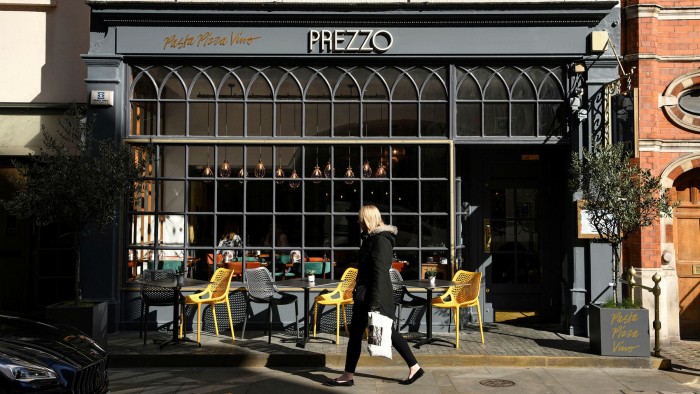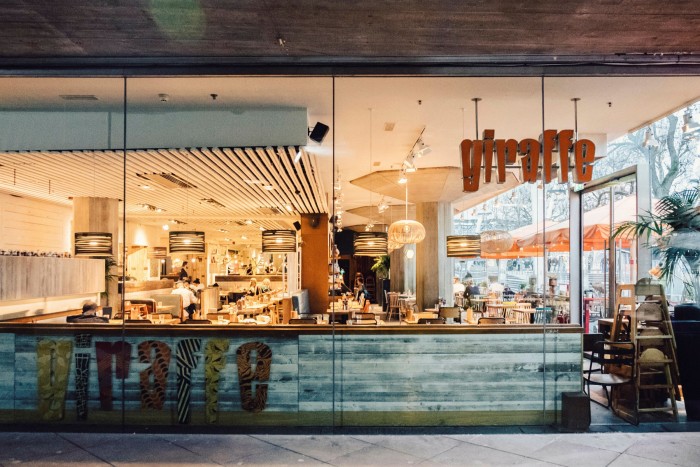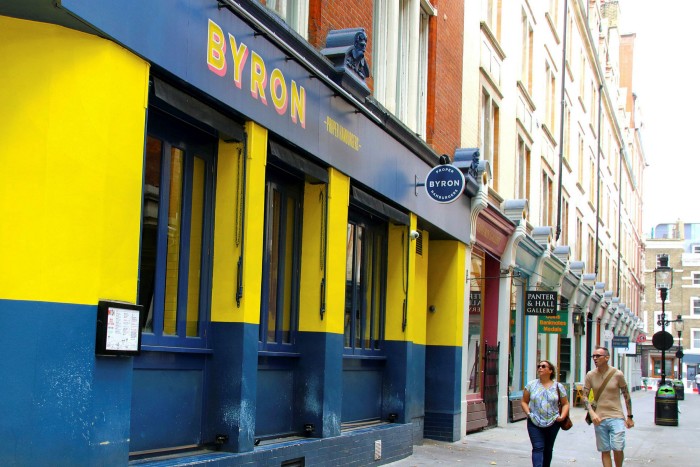Consultants rewrite the recipe for Covid-hit restaurant chains

Simply sign up to the Management consulting myFT Digest -- delivered directly to your inbox.
Barely a week after the UK government put the country into its first lockdown last March, one of the biggest casual dining chains declared insolvency.
Carluccio’s had already called in FRP Advisory to consider its options but with revenues too high to qualify for the government’s rapidly arranged loan scheme and a credit rating too low for the Bank of England’s financial support, it fell into administration.
The business, founded in 1999 by the chef Antonio Carluccio, was the first of many chains to falter as restaurants were forced to close under pandemic restrictions. Facing no revenues and mounting bills, the big national restaurant chains called in both consultants and advisers. Several chains went into administration, with at least five sold to new owners.
“If there was ever going to be a sector to be hit, it would be [casual dining]. The model of ownership doesn’t lend itself to having huge cash buffers”, says Rob Moran, restructuring deals leader at PwC.
The Management Consultancies Association says consultants made a rapid shift to help the worst affected: “Clients turned to trusted advisers so there were a huge amount of firms pivoting into business continuity, government grant applications, supply chain implications and so on.” Many are included in the UK’s Leading Management Consultants.
The sector was under mounting pressure before coronavirus. In a booming market in the 2010s, private equity houses bought up and expanded the best known national chains, resulting in oversupply. A cocktail of increasing rents, business rates, food and payroll bills exacerbated the problem.
Chains such as Prezzo and Giraffe had already undergone company voluntary arrangements (CVAs) — a restructuring process designed to cut costs, in particular rent, and close underperforming sites.

“If you wind back pre-Covid we were saying the casual dining sector . . . has really got to change because the amount of money people were spending on rent in particular was getting out of hand,” says Peter Backman, an independent industry consultant. “There was too much capacity [and] the brands themselves were coalescing . . . the feel, the pricing, the service levels were all very similar.”
As a result, when lockdown hit, restaurant chains were among the fastest to react. Sarah Humphreys, a consultant and partner specialising in casual dining at Deloitte, says that the firm had already held two conversations with multi-site hospitality businesses in the week before lockdown.
“You get to a stage that you keep asking questions that you can’t quite answer [about what action to take] and reaching out for help is always a good thing,” says the chief executive of one large national chain, who asked to remain anonymous.
Turnround experts were often called on first to address cash problems. Clients needed advice on government support, what loans they could access and what costs they could cut.
Will Wright, head of regional restructuring at KPMG, who advised on several restaurant chain administrations in the crisis including the burger brand Byron and Zizzi’s owner Azzurri Group, says that typically the process starts with a board-level conversation about the short term cash position, which “drives the timetable”.
The difficulty is knowing how long cash reserves must last. “Restructurings themselves are higher risk than they would normally be,” he says.
A common outcome has been to put chains through a prepack administration to find new backers. Carluccio’s, for example, was bought by Boparan Restaurant Group for £3.4m, saving 800 jobs, while Byron was bought for £4m by the private investment company Calveton UK after it went into administration in August.

“People will pay a token price because [they] need to fund the losses for a period of time we don’t know,” says Humphreys. Despite hopes sparked by vaccines, few in the hospitality industry are expecting to trade without social distancing measures until well into the autumn.
To survive, chains have slashed costs, most often rent, bringing in advisers to negotiate with property owners. Several resorted to CVAs to force landlords’ hands and make an early exit from unprofitable sites. A controversial measure, CVAs should be used as part of a holistic approach, not to “landlord bash”, says Moran.
As lockdowns drag on, consultants have pushed chains to pivot towards takeaway and click-and-collect models. Many say that delivery is a trend that will outlast the pandemic.
They have also helped owners to think about where to consider new sites, namely more suburban and market town locations as working from home continues, and whether to open delivery-only “dark” kitchens.
More from this report
Backman says questions include: “Should we be in city centres and if so which ones? Should we go into suburbs and how do we manage that?”
Consultancy firms can bring some of their own resources to bear: Deloitte uses AI-driven analytics software to work out where clients should target their footprint, for instance.
“What the pandemic has brought through is that people still want [restaurant-quality] food but you just need to get it to them,” says Humphreys. “It has led to people experimenting either with [delivery] and cook-at-home boxes too. It definitely widens that customer base as long as it’s not detrimental to the brand.”
The competition for restaurants as we emerge from lockdowns will be the home, says Steve Braude, director at consultancy AlixPartners: “Customers potentially have a greater range of options with which to substitute the in-restaurant option, with deliveries, meal kits and home cooking, so restaurants need to ensure that they are front of mind.
“Rather than returning to the ‘old’ ways of doing things prior to Covid, the focus needs to be on ‘building back better’ and changing the service offering to meet the new customer behaviours that have emerged over the past year,” he adds.
Comments